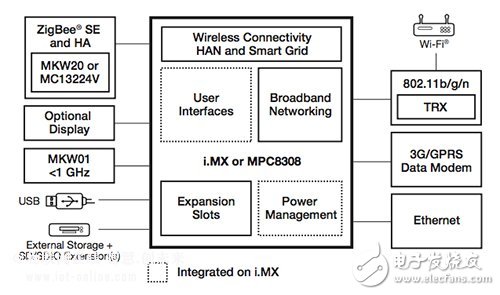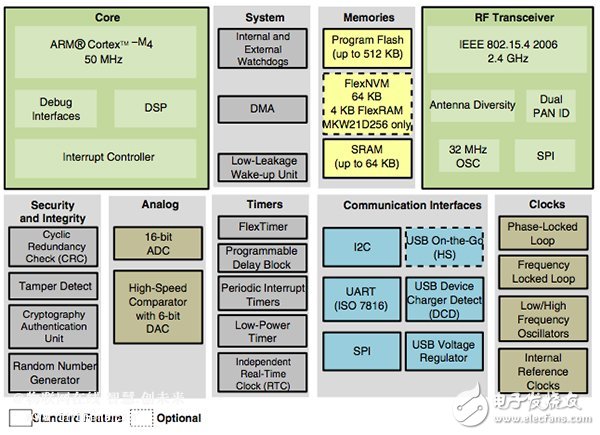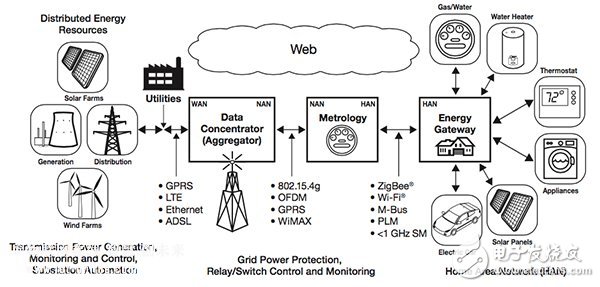Smart Energy Integration Solution
Business-driven smart energy is easy to understand; the cost savings of electricity is 1 kW-hr, which is estimated at 1.7 cents, while the cost of generating 1 kW-hr is now considered to be around 10 cents. But look at these numbers and have savings. Legislation has also played a role. As the government is eager to be seen as a requirement for building smart energy, suppliers must comply.
Utilities are obligated to install and maintain a smart energy network means they will obviously incur costs initially, and after a general understanding, they will receive revenue. However, the cost and functionality of smart meters must be low and comprehensive, if suppliers see these potential benefits.
Applying pressure or creating an opportunity for semiconductor manufacturers to produce the right solutions, these solutions are increasingly being used in microcontrollers but with very specific features for this fast-growing market.
In your network
The key to smart grids is to create no network, but a series of network sizes increase, to a certain extent, they contain all the equipment needed for monitoring. This triggers a hierarchy of networks, such as domestic regional networks (Han) and nearby regional networks (South), which in turn become a local area network (LAN) and/or wide area network (WAN).
The protocol and each physical interface may be different, so saving security, performance, and data integrity requires equipment at each stage, understands these requirements, and can be used in these limitations.

Figure 1: Freescale offers a wide range of microcontrollers for specific areas of the smart grid.
Figure 1 shows Freescale's proposed home energy management system, which has many features, including the collection of real-time smart meters and other internal equipment energy consumption, providing feedback on how to use energy in local users, allowing users to control other locally connected devices; It also provides a link to the ubiquitous broadband connection. At the same time the system will be based on the core processor, the wireless interface will be implemented by the device, etc. MKW20.
This wireless-backed MCU has an arm-cortex-M4 core core, plus an internal fully compatible 802.15.4 transceiver to provide services that can operate a 16-year-old selectable channel in the ISM band at 2.4 GHz (Figure 2 ).

Figure 2: MCU integrated RF transceivers, such as Freescale's MKW20 family, are expected to be in high demand for smart grids.
A similar microcontroller, based on the 8-bit 8051 core, is available in the Silicon Lab. The Si106x x/108 home positioning smart metering app, especially powered by batteries, has been available for 20 years in this family, according to the Silicon Lab. This may be a useful device that will form part of the Han, as described below.
integrated
The meter is expected to have many different shapes and sizes, not only monitoring the energy used but almost any utility, or its effect. Typical utilities, of course, gas and water, so the flow meter will form a large part. Using another microcontroller-specific metering function like the Si106xx / 8 xx can work together, although some manufacturers may need to combine all of these features into one device.
This can be a challenge for some microcontrollers, but Atmel has developed a solution area specifically for this application: the SAM4C series. Describe these are single-chip microcomputers as smart energy applications soc, it is not difficult to see why. First, the device integrates two arms of the Cortex-M4 core in this range; one (called the application or the main core) is a Cortex-M4 running at 120 MHz, featuring a memory protection unit and DSP instructions. The second (called the coprocessor and the intended to run metering function) is a Cortex-M4F and features a single precision floating point unit (FPU). Figure 3 shows a block diagram of the SAM4C family with a dual-core architecture.

Figure 3: The Atmel SAM4C Series provides a dual-arm Cortex-M4 core combined with application code and communication and security.
It supports high-performance AES 128 to 256 encryption and features TRNG (True Random Number Generator), public key accelerator and integrity check module based on secure hash algorithm (SHA1, SHA224 SHA256). It also provides four physical anti-tamper detection I/O timestamps and an immediate clear general backup register. These features allow the SAM4C family to integrate application layers, communication layers, and security functions on a single device.
The need for security, obviously, high-smart energy applications, here are some of the manufacturers where to really push the technology to deliver new and innovative solutions, the next one.
Snooping
Many microcontrollers now offer on-chip encryption compliance standards including 3 des, AES, RSA and ECC and have been used for protocols such as wireless personal area networks, Wi-Fi and Bluetooth. Hardware-accelerated encryption technology is also becoming more and more common, especially in the field of smart energy for microcontrollers. Encryption algorithms run an integral part of storage and are here to be the key to Texas Instruments' ferroelectric random access memory (Flame) MSP430-based devices that may be of particular interest.
Like flash, the Fram does not require a charge pump, which has two advantages. First of all it means that the microcontroller needs less power to read/write memory, making it more feasible to do so in a battery-powered application. Smart appliances, smart flow meters or smart heat meters will provide significant benefits for TIme-in-service between battery changes. But perhaps more importantly, from a safety point of view, because there is no charge pump, there is no “warning†of the key to storage before the power-spike occurs. This signature is an unwelcome intruder who will look for the key to capture.
Another benefit of the MSP430F6 family, in a security-sensitive application, is to guarantee that it will complete a Framm write even if the power process is removed. It achieves this goal, with integrated transceiver capacitors storing enough power to complete the process. This with a flash or EEPROM-based device, the data that must be copied is stored in the case of a power outage. Obviously, from a security perspective, it would be better to avoid this situation, and "Flam" offers this advantage.
in conclusion
The smart grid and smart metering industries are naturally recognized by the standard IEC 62056, coverage, and other recognized specifications dlm (device language information specification) and COSEM (companion specification energy metering), and protocols include wireless personal area networks, Bluetooth and wifi (not to mention threads). Weight loss, etc. now appear). Supporting these standards and specifications and providing a degree of differentiation is key to the semiconductor supplier's remaining in this market and continues to develop innovative and profitable solutions. Fortunately, this industry is such a commitment to innovation and smart home, the Internet of Things, and even Industry 4.0 are drawn closer. This new landscape will ensure supply security and play an important role in reducing energy costs in all situations.

Figure 4: Overview of Freescale Smart Grid and Metering Solutions.
Aluminium Fitness Equipment,Aluminum Sheet Metal Lowes,Aluminium Rectangular Tube,Extruded Aluminum Shapes
KAM KIU ALUMINIUM GROUP , https://www.kamkiualuminium.com